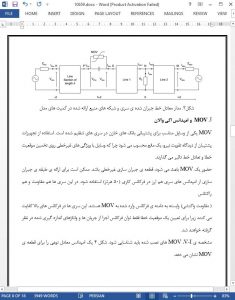Abstract
This paper deals with the fault location on high voltage series compensated lines. A new approach to evaluate the fault distance is proposed. The distributed-parameter line equations are preferred to describe the overhead lines. The algorithm uses two-terminal measurements, but those data do not require synchronization. No information on the fault resistance value and on the fault type is necessary.
Numerical tests with time-domain sampled measurements are carried out. The simulations are performed using EMTP-ATP. Results for various fault resistance and fault distance values, and fault type conditions, are reported.
I. INTRODUCTION
dentification of a fault and accurate estimation of the fault distance become increasingly important for high power transmission lines in the deregulated electricity market.
The possible approaches to the digital fault location problem using moderately low sampling rate of measured data, on which this paper will be focused, can be divided into two main groups, namely the algorithms using data from one terminal of a transmission line, and the other using data from both terminals. The former is superior in the economical point of view because it requires no data transfer along long distances and no data synchronization [11]. The latter is superior in the accuracy of fault location point of view, but requires a data transfer system.
V. CONCLUSIONS
This paper deals with fault location on series compensated lines. The developed method uses line equations taking into consideration the distributed nature of line impedances and capacitances in contrary to former methods that describe the line by a lumped series impedance.
The presence of a non-linear element along the line, such as the series capacitance and its protective device MOV, does not allow linear representation such as the Thevenin method. For that reason a two-terminal fault location algorithm is proposed.
The fault distance is determined in a general way using modal theory. The developed method does not need any knowledge of fault resistance and fault type. Only line parameters and the impedances of source networks interfacing the line at both ends are required. The compensation stage with the protection device can be represented by currentdependent equivalent impedance at power frequency.











